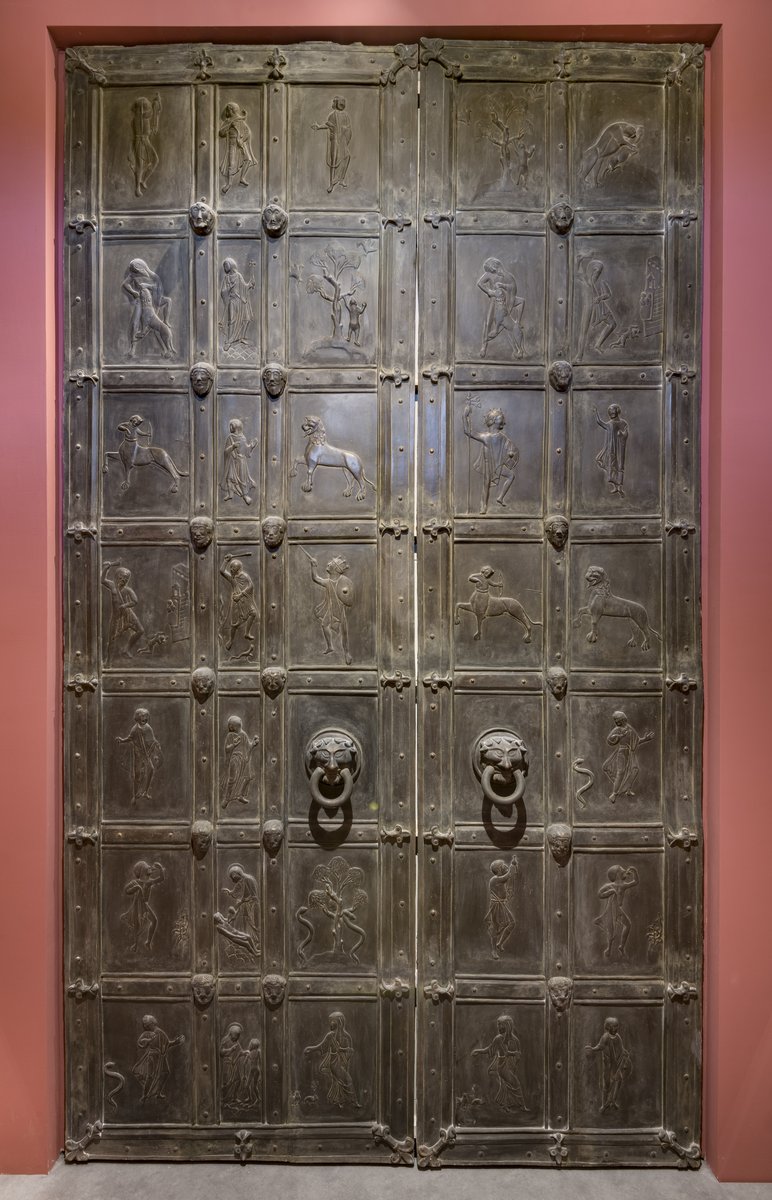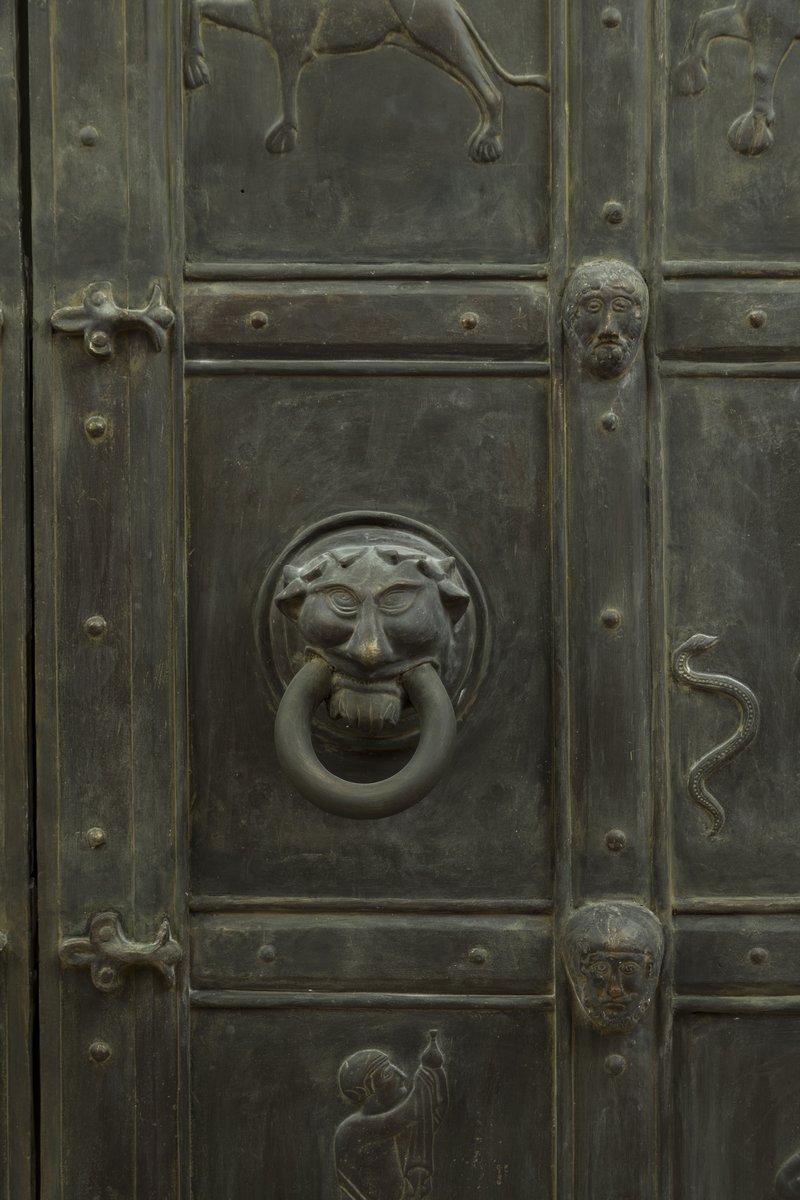Bronze doors
South German Sculptor, Joseph Kreittmayr (cast maker)- Artist
-
South German Sculptor
11. század
Joseph Kreittmayr
(cast maker)
München
- Dated
- ca. 1006 (original), 1909 (cast)
- Classification
- sculpture, plaster cast, doors
- Medium
- plaster cast
- Dimensions
- 396 × 230 × 12 cm
- Inv.no.
- Rg.1
- Department
- Sculptures - Plaster casts
- Current Location of the Original Artwork
- Germany, Augsburg, Diözesanmuseum St. Afra
- Location
- Star Fortress (Komárom), Corridor E
The east doors of Augsburg Cathedral, a building constructed between 995 and 1006, are among the earliest major relics of medieval bronze sculpture and constitute the main work of Ottonian sculpture. The doors form thirty-five decorative panels, with depictions on three main themes: scenes from the Book of Genesis (with the creation and fall of man); the Old Testament figures of Moses, Aaron, Samson and David (considered to be the progenitors of Jesus); and pictures from medieval animal symbolism. The door knockers are decorated with the heads of lions, as in the medieval period the lion symbolised vigilance and the defeat of evil. In Christian symbolism, the doors to a church constitute a boundary between earthly existence and paradise in heaven; they are open only to the faithful who overcome sin. Accordingly, many of the reliefs – for instance, the scene of Samson’s victory over the lion and the army of Philistines – allude to the struggle between virtue and sin.



